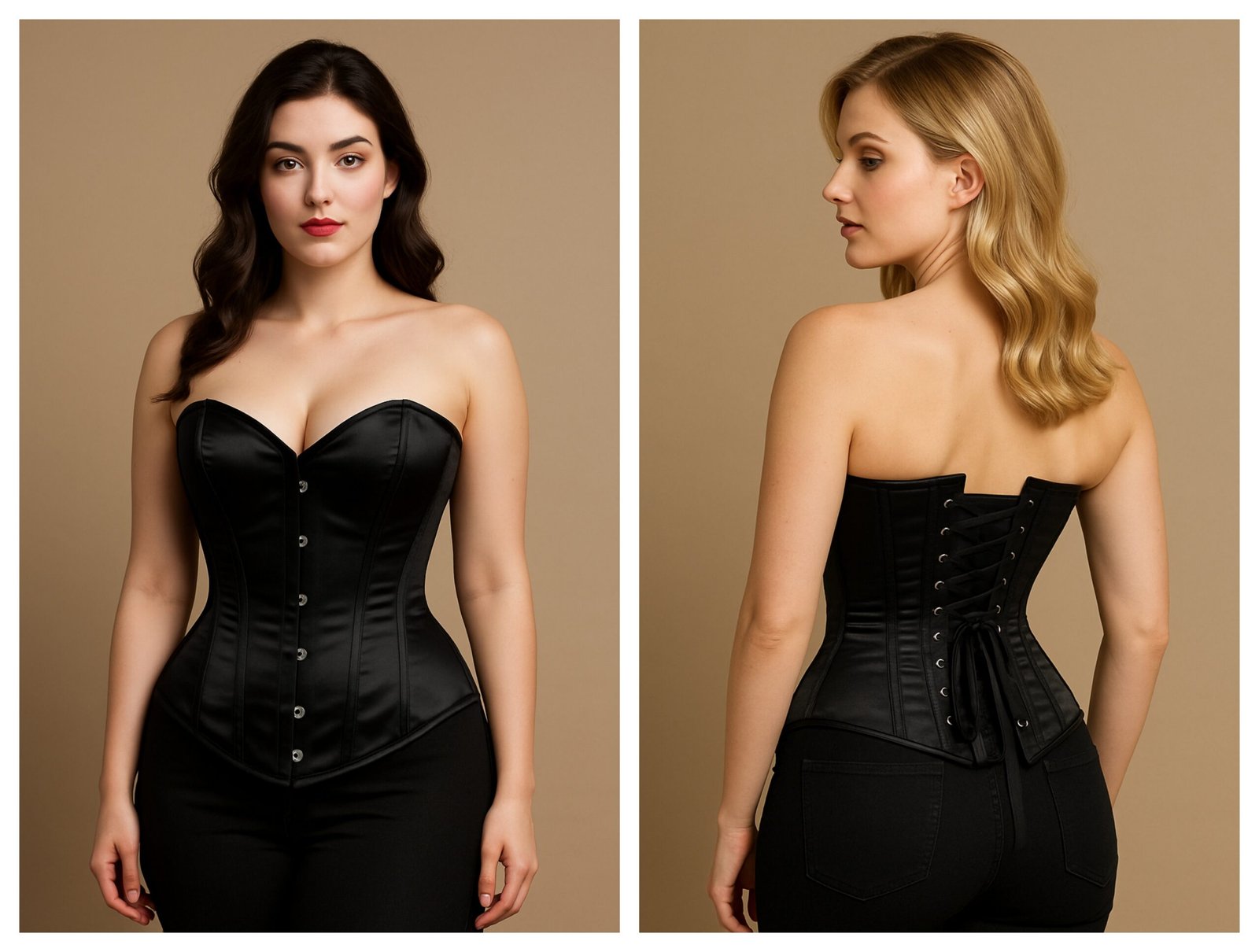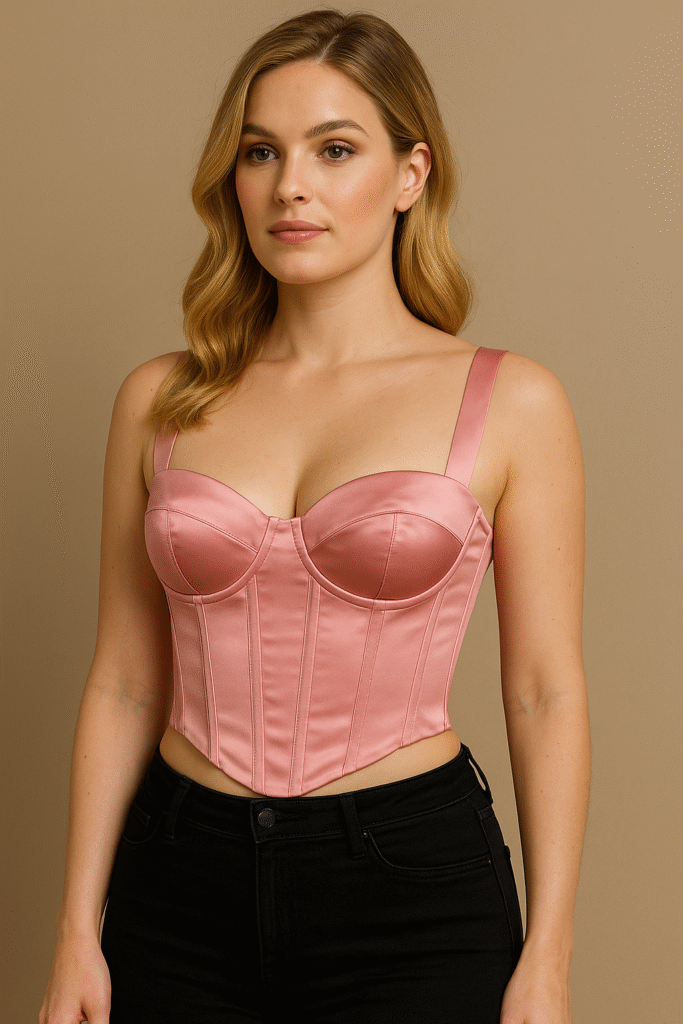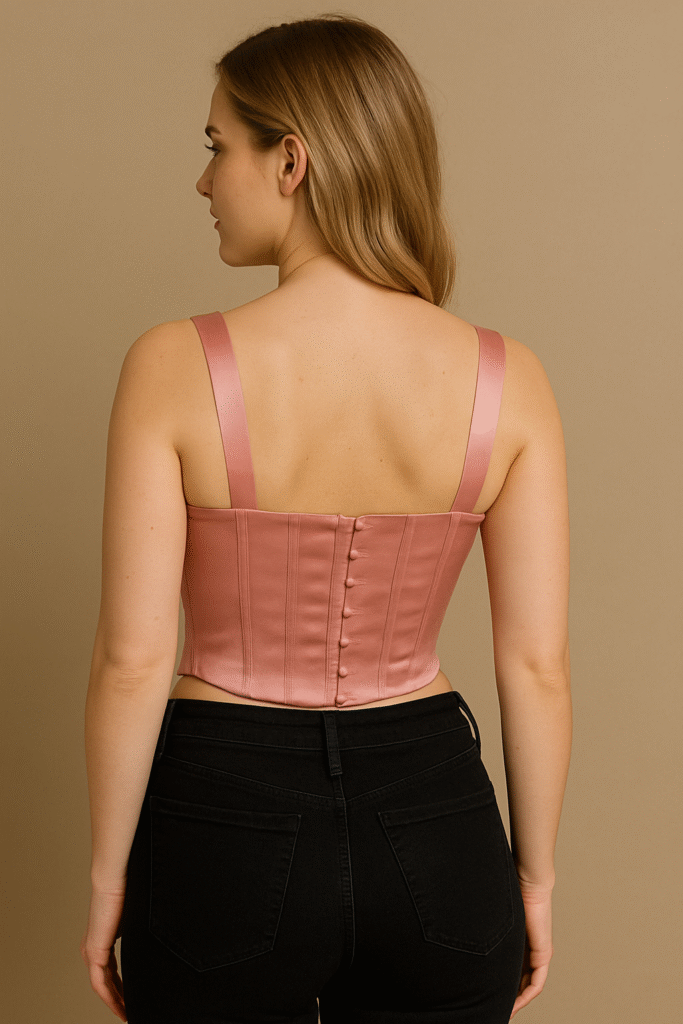A Complete Fit & Fabric Guide of Satin Bustier

If you want to sculpt your waist, accentuate your curves, or just fall in love with the sophistication of shapewear, you’re not alone. Women searching for the ideal waist trainer for women tend to begin with the same questions: What size do I need? What material is best? Will it really work for me? Whether you’re a beginner to corsetry or adding a luxe satin bustier to your wardrobe, this guide simplifies everything for you—so you can shop intelligently and sculpt with confidence.
Why Satin Bustiers and Waist Trainers Are Worth It?
There’s something classic and strong about stepping into a satin bustier or waist trainer corset. The gentle but firm hug immediately cinches in your waist, flattens your torso, and pushes up your bust. And it’s not only aesthetics—these pieces correct posture, slim down waistlines temporarily (or for good with training), and leave you feeling unstoppable.A steel construction corset that is made well is more than a hot fashion trend—it’s a shaping device that coaxes your body into place, rather than trying to force itself against it. From traditional silk corset tees to sculpture overbust corsets, the trick is all about the fit and construction.


Step 1: How to Find the Correct Corset Size
Let’s dispel one of the most popular fears: buying a corset online and never having the chance to try it on. But here’s the good news—you can find the perfect fit with accurate measurements.
Begin by taking your natural waist, which is usually the smallest part of your torso. This is not necessarily where your pants actually sit! If your waist is not obviously smaller than your hips, stand up and measure at the point where your elbows naturally rest when your arms are hanging at your sides. This is normally at the navel. After you’ve got your waist measurement:
- If you’re purchasing a fashion bust corset or satin corset top, select the size nearest to your waist.
- If you’re looking for a heavy-duty steel-boned corset or sculpt touch waist trainer, take away 4–5 inches from your natural waist measurement for tight-lacing.
- For waist training corsets, you can go down 6–7 inches for more dramatic shaping. These are made for everyday or extended wear.
So, if your waist measures 32″, select a steel boned overbust corset in the size 26–28 based on how much you want the fit to be tightened.
Step 2: What to Look for in a Quality Waist Trainer
Not all corsets are equal—particularly with waist training. Here’s what to look for when selecting a waist trainer for women that’s worth your investment:

- Steel Boning is Non-Negotiable
An authentic waist trainer corset has to be constructed with steel boning, not plastic. Stylish corsets may be adorable, but they don’t provide the support or reduction genuine waist trainers do. An excellent corset employs flat and spiral steel bones—flat bones for support, spiral bones for flexibility.
Need serious waist loss? Find corsets with a minimum of 20 steel bones. Otherwise, it may be a boned corset, but not a full waist trainer.
- Steel Busk Front Closure Only
Steer clear of zipper or hook-and-eye closures for waist training—those won’t withstand the pressure. A steel busk (those sturdy little metal clasps at the front) holds things firmly in place even when you’re lacing tightly. It’s made to last, and it’s pretty to look at as well. - Sturdy Outer Fabric
Thin or glossy material may photograph well but will not provide support. Use materials such as satin, taffeta, cotton twill, or denim. A satin corset or silk bustier constructed with reinforced layers provides both loveliness and strength. Better still if the outer material is fused to the lining—no more bunching and it provides structure. - Proper Lining Matters
A true waist trainer for women always features a lining—best if made of natural fibers such as cotton or a cotton-poly blend. This lining shields your skin, makes the corset breathe, and increases comfort for extended wear. A lined plus size lace up corset will be significantly more supportive than one that’s skin on the inside. - Real Photos and Transparent Details
Don’t believe in a corset that presents only flat-lay photographs or clearly photoshopped images. Be on the lookout for product photographs on actual bodies, close-ups of which reveal the boning, fabric, and lace-up back. A reliable brand isn’t hesitant to reveal the details since the quality speaks louder than words.
Step 3: Choosing Between Styles – Bustier vs. Overbust vs. Underbust
Here’s the excitement! Now that you know what to look for and how to size, it’s time to select your style.
Satin Bustier: Generally softer, occasionally lightly boned, styled for beauty and delicate shaping. Ideal for layering or lingerie. The satin bustier peonies overbust corset is a classic example of this style—regal, feminine, and curve-enhancing.
Overbust Corset: Encompasses the bust, waist, and hips. Ideal for producing theatrical curves and wearing as a complete top. Ideal in silk bustier tops or plus size lace corsets for bust support and figure shaping.
Underbust Corset / Waspie: Stays just below the bust, providing a bit more wiggle room for layering bras or tops. Perfect for everyday wear or complementing fashion outfits. Experiment with a satin waspie paired with jeans or skirts for a fashion-chic look.
Plus Size? No Problem:
There’s a corset for every body. The best plus size corset lace up styles are made with strong fabrics, longer lacing panels, and generous curves built into the pattern. Whether you’re after a plus size lace up corset or a plus size lace satin corset, the key is still the same: steel boning, proper lining, and correct size.
Don’t be shy to go daring—plus size overbust corsets are super flattering and provide whole-body shaping and improved posture. And they work great under dresses or over tops.
Bonus First-Timer Tips:
- Break it in gradually: Don’t tighten your brand-new waist trainer corset on the tightest setting day one. Give your body a chance to get used to it by wearing it loosely for the first few hours.
- Always lace from the middle: Tighten the laces from your waist (center back), pulling evenly to the top and bottom.
- Wear a liner or tank top underneath: It makes it easier to put on and take off, and keeps the corset cleaner.
- Don’t ignore discomfort: A steel boned overbust corset should be tight but not hurt. Discomfort indicates it’s too tight or the wrong size.
Final Thoughts: Shape with Confidence
Whether you’re on the hunt for a daily sculpt touch waist trainer, a seductive satin corset top, or a chic silk corset, the secret to falling in love with corsetry is easy: get the right size, pick high-quality materials, and don’t compromise on anything less than steel boning. With the right garment, you’ll have instant curves, long-term confidence, and an ageless look that you can rock in dozens of ways. From satin corsets to industrial-strength steel-boned corsets, your ideal match is waiting—ready to shape, support, and slay.



